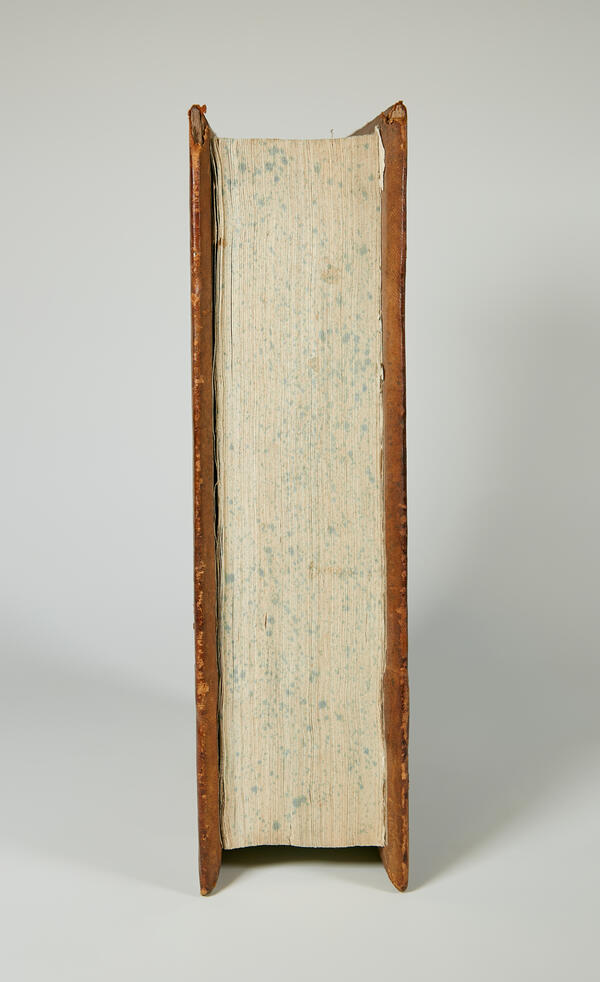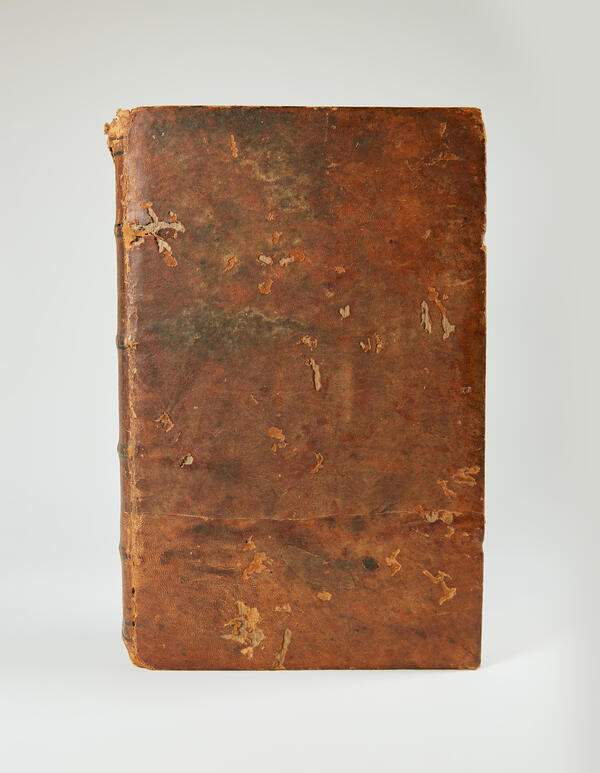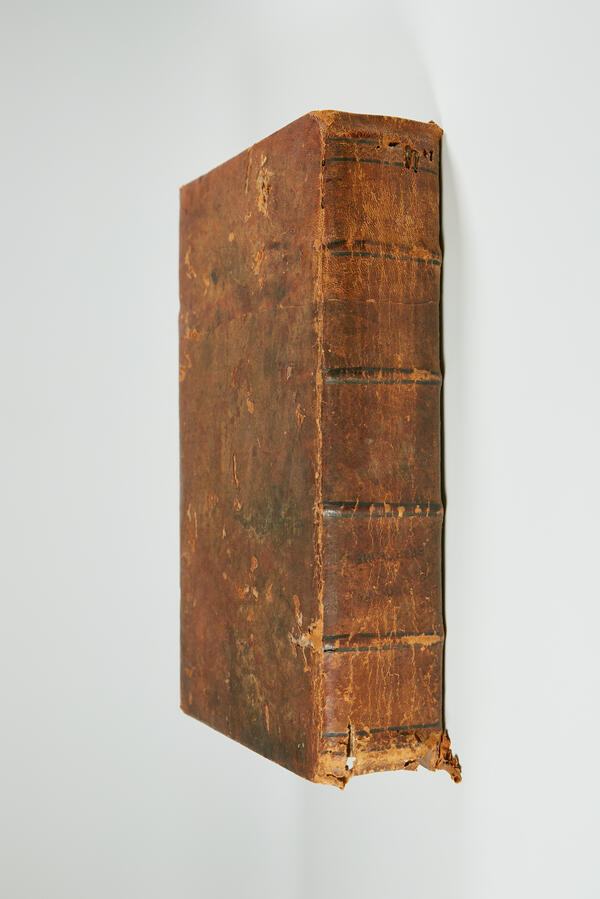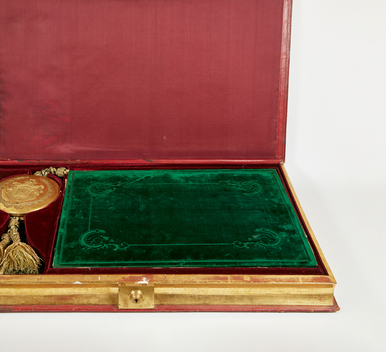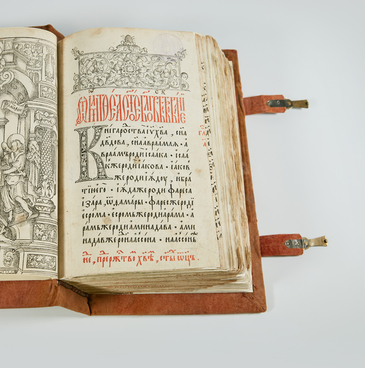The collection of the Museum of Moscow contains the book entitled “The Didactic Gospel” — a rare early printed church book, published in Moscow in the 17th century.
“The Didactic Gospel” is a collection of sermons, compiled at the end of the 9th century, which a lot of scholars attribute to Constantine of Bulgaria (of Preslav), a bishop, representative of the Preslav Literary School, and one of the disciples of Saint Cyril and Saint Methodius. His translations of the most important and interesting passages from the writings of John Chrysostom, Cyril of Alexandria, and other Church fathers were, in modern parlance, a collection of valuable materials used in Sunday Gospel readings in churches. The author started his “Didactic Gospel” with a preface and a poetic “alphabet prayer”. Each section, a Sunday discussion, corresponded to one of the weeks of the annual liturgical cycle, from Easter Week to Holy Week. The text is adorned by elaborate frames, which are crowned by engraved headpieces with numerous fine details. The patterns are predominantly floral.
The book was printed on laid paper. This paper is notable for a grid of streaks, also called “vergeures” or “pontuseaux”, on its surface. Originally laid paper was made of linen and hemp fabric and was valued for its high durability. The paper pages of the gospel, featuring skilled illustrations alongside the texts, are protected by a leather-bound wooden cover. The printing was done using two colors: the main text was in black, with a “red line” indicating the beginning of chapters and the initial characters. Both handwritten and printed copies of this book have been preserved.
The first printed edition of the book was produced by the famous “drukar” printers (as they were called in Russia back in the old days) — Ivan Fyodorov and Pyotr Mstislavets in their Zabludov Printing House as early as 1569. Several of Bishop Constantine’s later editions are known to have been compiled in Moscow. They include this rare exhibit from the collection of the Museum of Moscow.

